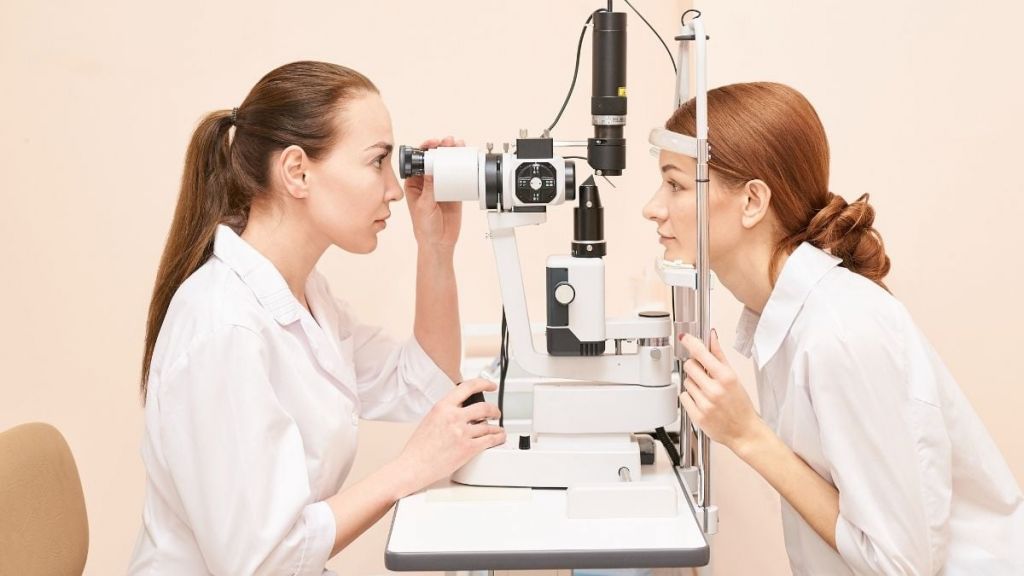
In a rare incident, a 23-year-old woman hailing from Texas, United States, lost her eyesight after swimming with contact lenses on. According to reports, she unknowingly developed a rare parasite infection, Acanthamoeba Keratitis (AK), during her trip to Alabama in August.
On a GoFundMe campaign set up to support her medical expenses, she stated, "This infection mimics other common infections so at the time I was put on steroids and a handful of other drops."
She further explained that the rare infection grew severe as a result of the delay in diagnosis. According to media reports, she stated, "I was in the most pain I’ve ever experienced and eventually went fully blind in my right eye."
The woman shared that she visited multiple eye specialists and eventually learnt she had Acanthamoeba keratitis, a dangerous infection that could lead to permanent blindness if untreated. “Because this infection is so rare, the drops that are used for treatment are only made in the UK. Luckily, the doctor’s office in Dallas had a couple of samples so I could start treatment as soon as possible,” she stated.
Now, she puts on eye drops every 30 minutes due to the slow recovery process. She further noted, "If I would have known that from not swimming in my contacts I could’ve avoided all of this pain, I would have never done it."
What is Acanthamoeba Keratitis (AK) condition?
According to a 2023 study published in the StatPearls journal, Acanthamoeba keratitis (AK) is an uncommon but frequently misdiagnosed corneal infection. The study found that it mostly affects people who wear contact lenses and that it can also occasionally develop from corneal trauma in those who don't wear contact lenses.
This infection has been brought on by the unicellular protozoan parasite Acanthamoeba, which is found all over the world. The study found that, "In the past 2 decades, there has been a continuous increase in contact lens users coupled with inadequate hygienic practices, elevated risk factors, and improper handling methods, which have led to increased risk of microbial keratitis, especially bacterial keratitis and AK."
Causes of Acanthamoeba Keratitis (AK)
As reported by the National Institute of Health (NIH), Acanthamoeba Keratitis (AK) infection is caused by the Acanthamoeba genus, a globally widespread unicellular protozoan parasite. Key risk factors include:
Trauma
Swimming in contaminated water
Using contact lenses in showers
Poor hygiene
Using contaminated lens solutions
Symptoms of Acanthamoeba Keratitis (AK)
As per Cleveland Clinic, here are the Acanthamoeba Keratitis (AK) symptoms:
Eye Pain
Eye-watering (epiphora)
Sensitivity to light
Inflammation or redness of the eyes
Corneas that have a ring-shaped patch on their surface or that seem hazy or unclean.
Blurred vision (Typically occurs in severe case)
Tips to prevent Acanthamoeba Keratitis (AK)
Here are some important tips to help prevent Acanthamoeba Keratitis (AK):
Avoid wearing contact lenses while swimming, showering, or using hot tubs.
Always wash your hands before handling contact lenses, and carefully follow the cleaning instructions.
Use only fresh, sterile contact lens solution each time—never use tap water.
Do not wear your lenses for longer than the recommended timeframe, and replace your lens case every three months.
If you notice eye redness, pain, or blurred vision, seek medical help promptly.
Acanthamoeba Keratitis (AK) Treatment
According to the Cleveland Clinic, topical antiseptic drops like polihexanide (sometimes called polyhexamethylene biguanide, or PHMB) and chlorhexidine are the primary therapeutic methods to treat Acanthamoeba Keratitis (AK).